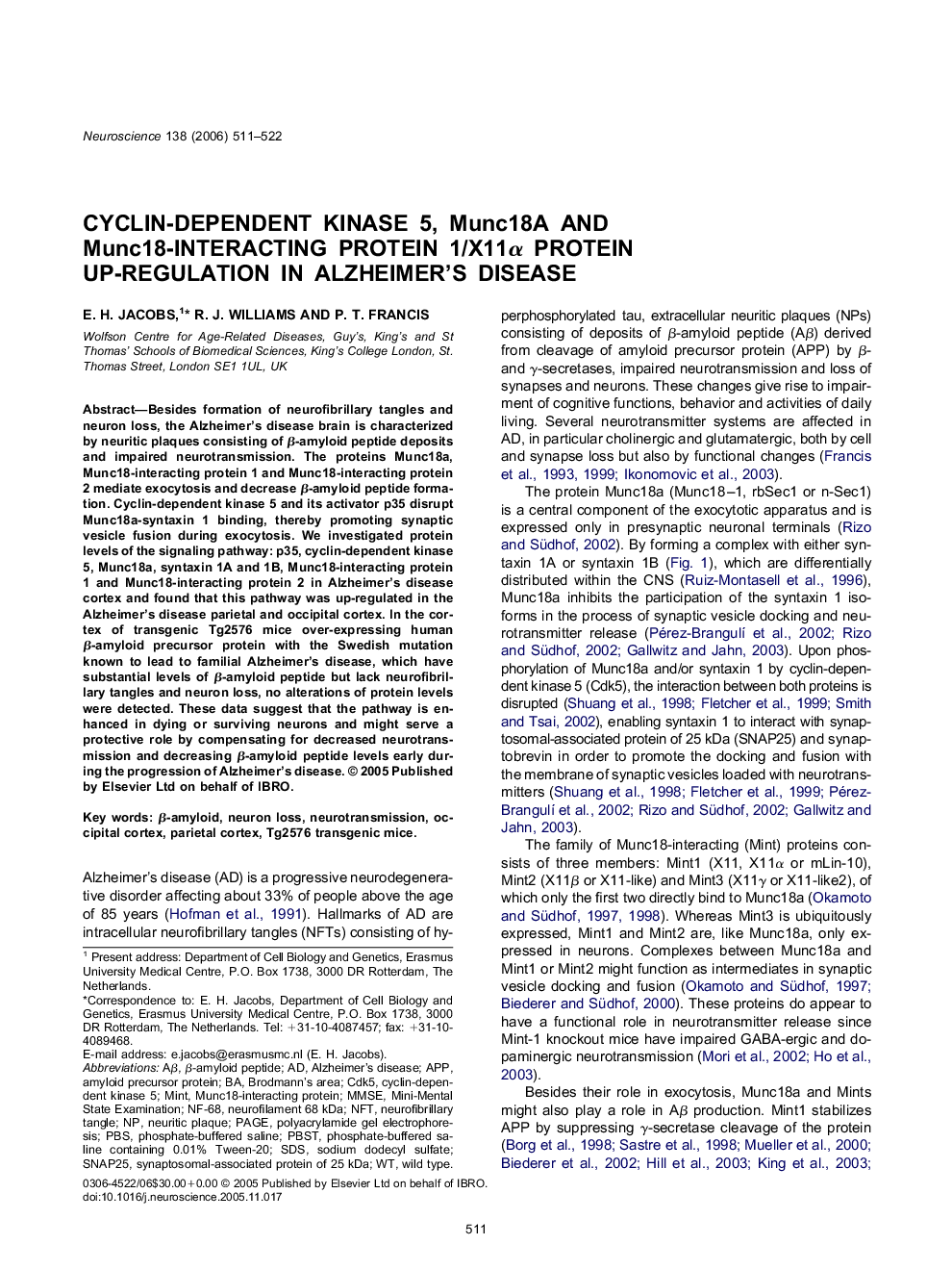| Article ID | Journal | Published Year | Pages | File Type |
|---|---|---|---|---|
| 4342497 | Neuroscience | 2006 | 12 Pages |
Abstract
Besides formation of neurofibrillary tangles and neuron loss, the Alzheimer's disease brain is characterized by neuritic plaques consisting of β-amyloid peptide deposits and impaired neurotransmission. The proteins Munc18a, Munc18-interacting protein 1 and Munc18-interacting protein 2 mediate exocytosis and decrease β-amyloid peptide formation. Cyclin-dependent kinase 5 and its activator p35 disrupt Munc18a-syntaxin 1 binding, thereby promoting synaptic vesicle fusion during exocytosis. We investigated protein levels of the signaling pathway: p35, cyclin-dependent kinase 5, Munc18a, syntaxin 1A and 1B, Munc18-interacting protein 1 and Munc18-interacting protein 2 in Alzheimer's disease cortex and found that this pathway was up-regulated in the Alzheimer's disease parietal and occipital cortex. In the cortex of transgenic Tg2576 mice over-expressing human β-amyloid precursor protein with the Swedish mutation known to lead to familial Alzheimer's disease, which have substantial levels of β-amyloid peptide but lack neurofibrillary tangles and neuron loss, no alterations of protein levels were detected. These data suggest that the pathway is enhanced in dying or surviving neurons and might serve a protective role by compensating for decreased neurotransmission and decreasing β-amyloid peptide levels early during the progression of Alzheimer's disease.
Keywords
NF-68PBSSDSAβNFTPBSTPAGESNAP25APPcdk5MMSEβ-AmyloidNeuron losspolyacrylamide gel electrophoresisNeurotransmissionAlzheimer’s diseaseNeurofibrillary tanglesodium dodecyl sulfatecyclin-dependent kinase 5Occipital cortexParietal cortexPhosphate-buffered salineMini-Mental State ExaminationBrodmann’s areaMintwild typesynaptosomal-associated protein of 25 kDaamyloid precursor proteinNeuritic plaqueβ-amyloid peptide
Related Topics
Life Sciences
Neuroscience
Neuroscience (General)
Authors
E.H. Jacobs, R.J. Williams, P.T. Francis,
